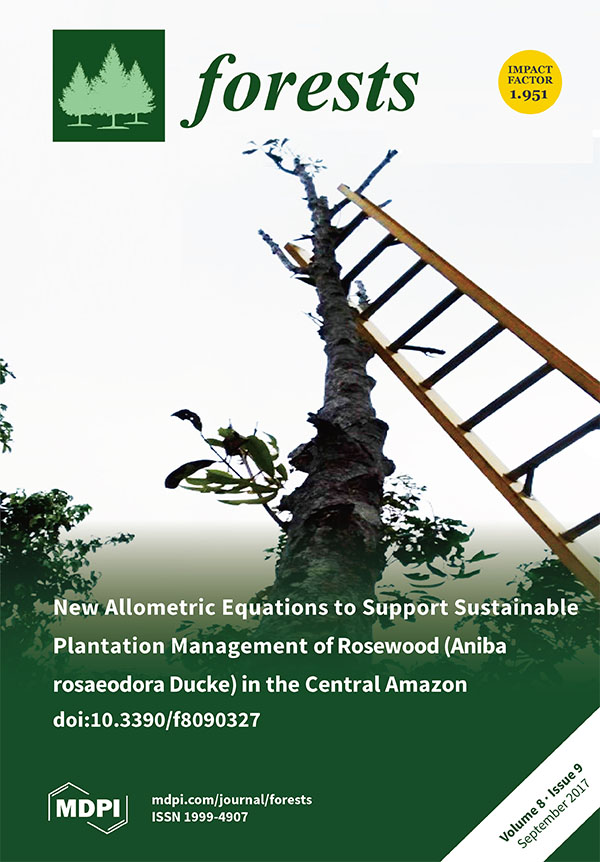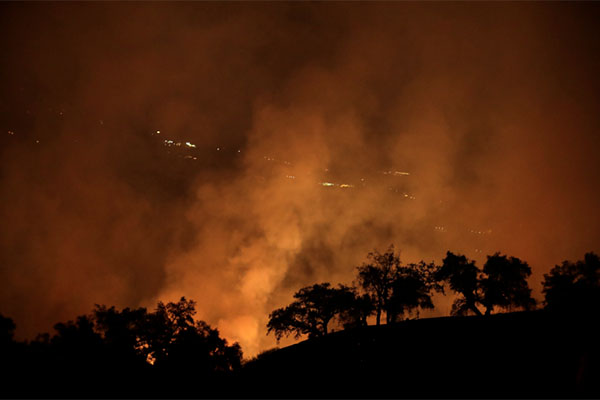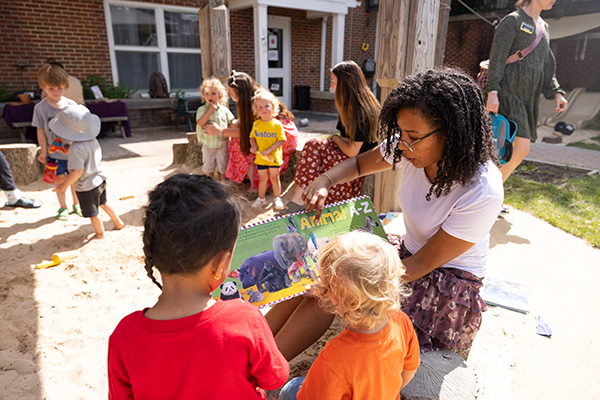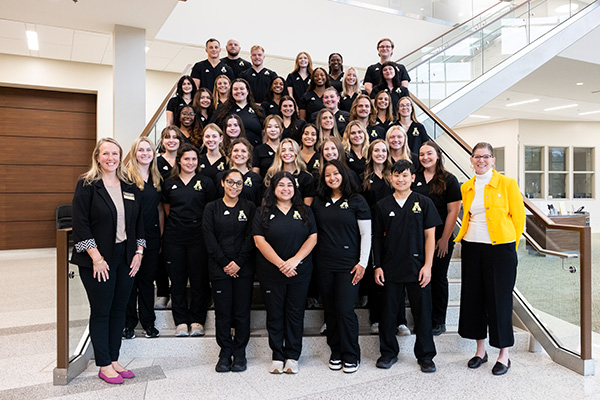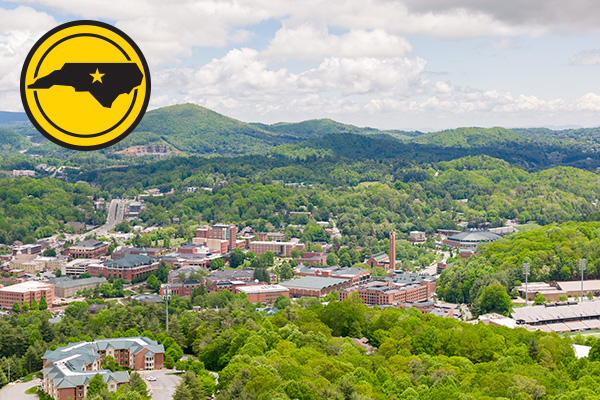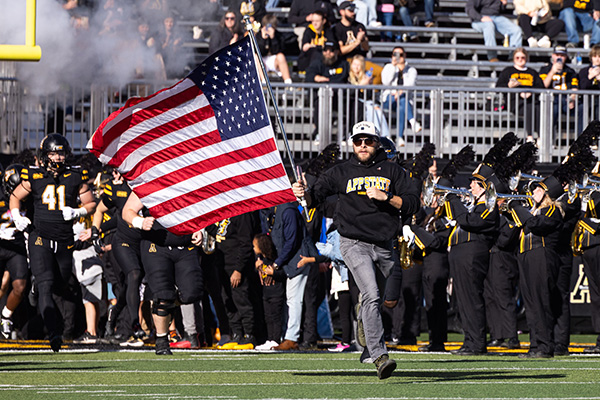BOONE, N.C.—Are the devastating wildfires in California potentially linked to larger atmospheric processes related to human-caused climate change? Researchers at Appalachian State University and the University of North Carolina at Greensboro believe there might be a connection.
In an article titled “Spatio-Temporal Linkages between Declining Arctic Sea-Ice Extent and Increasing Wildfire Activity in the Western United States” published in late August in the international journal Forests, Dr. Peter Soulé in Appalachian’s Department of Geography and Planning and Dr. Paul Knapp, professor and director of UNCG’s Carolina Tree-Ring Science Lab, present evidence suggesting that the amount of sea-ice found in the Arctic during the winter months is a driving force behind summertime weather conditions that control wildfire activity in the western United States during the summer.
“It is very important that climatologists not blame any individual meteorological or climatological event on human-caused global warming. We always had hurricanes, droughts, wildfires and blizzards. However, we must consider the bigger picture: Are human activities changing the atmosphere in ways that make it more likely for extreme events to occur,” Soulé said.
In the case of western wildfires, the connection may be through a phenomenon called the “Arctic Amplification,” whereby temperatures in the highest latitudes of the northern hemisphere are increasing at much faster rates than the global average.
In their article, Knapp and Soulé note that the loss of sea-ice in the Arctic has been dramatic since satellite monitoring began in 1979, occurring at a pace of an 11 percent loss of ice per decade and with a 65 percent reduction in sea-ice thickness since the 1970s. The loss of sea-ice raises the albedo, or reflectivity, of the Arctic because snow and ice are very reflective, and exposed ocean water is less reflective. With less ice, more solar energy is absorbed and the Arctic warms.
The process then works through what climatologists call a “teleconnection,” whereby what happens in one part of the world impacts the weather in other parts of the world. Atmospheric teleconnections are well-known, with one of the best examples being a reduction in Atlantic hurricane activity during strong El Nino years because El Nino is associated with increased high altitude winds over the Atlantic that tend to rip apart developing thunderstorms.
For wildfires, the connection is through the jet stream. Knapp and Soulé’s research presents evidence showing that increased undulations in the summertime jet stream over the western United States create warmer and drier conditions that are conducive for wildfire activity. The specific term they use is “ridging,” which means that the jet stream over the western United States bends northward. Under this northward bend extended periods of sinking air develop, which bring exceedingly warm and dry conditions.
Knapp and Soulé analyzed long-term spatial patterns of temperature, precipitation and soil moisture related to decreasing levels of Arctic sea-ice and established strong linkages between these parameters and atmospheric conditions at the level of the jet stream.
They note there has been a 65 percent increase in the meridionality, or waviness, of the jet stream since the early 2000s, and this waviness causes the warmer and drier conditions. In turn, western wildfire activity has skyrocketed since 1980, with an annual increase in areas burned of over 36,000 hectares. Associated with the increased wildfire activity are the costs of fighting fires, and Knapp and Soulé note that the proportion of the U.S. Forest Service’s budget that goes to fighting wildfires has increased from 16 to 52 percent since 1995.
According to Soulé, the current wildfire outbreak in California has multiple causes. For example, this winter was especially wet in California, leading to abundant vegetation growth this spring. As this growth has dried out, the available fuel load is high. When the high fuel load combined with dry conditions, high temperatures, strong winds and multiple ignitions, the stage was set for a large wildfire outbreak.
While multiple factors are responsible for the ongoing wildfire tragedy in California, the research by these two North Carolina geographers suggests that wildfire activity in the western United States will remain on an upward trajectory as long as temperatures in the Arctic continue to rise.
Paul A. Knapp and Peter T. Soulé
Forests, September 2017
Appalachian's Dr. Peter Soulé talks with WFDD's Sean Bueter
About the Department of Geography and Planning
The Department of Geography and Planning promotes the understanding of the spatial dimensions of human behavior within the physical and cultural systems of the earth and the role of planning in achieving improvement in those systems. It offers degrees in geography and in community and regional planning.
About the College of Arts and Sciences
The College of Arts and Sciences (CAS) at Appalachian State University is home to 17 academic departments, two centers and one residential college. These units span the humanities and the social, mathematical and natural sciences. CAS aims to develop a distinctive identity built upon our university's strengths, traditions and locations. The college’s values lie not only in service to the university and local community, but through inspiring, training, educating and sustaining the development of its students as global citizens. More than 6,800 student majors are enrolled in the college. As the college is also largely responsible for implementing App State’s general education curriculum, it is heavily involved in the education of all students at the university, including those pursuing majors in other colleges. Learn more at https://cas.appstate.edu.
About Appalachian State University
As a premier public institution, Appalachian State University prepares students to lead purposeful lives. App State is one of 17 campuses in the University of North Carolina System, with a national reputation for innovative teaching and opening access to a high-quality, cost-effective education. The university enrolls more than 21,000 students, has a low student-to-faculty ratio and offers more than 150 undergraduate and 80 graduate majors at its Boone and Hickory campuses and through App State Online. Learn more at https://www.appstate.edu.
What do you think?
Share your feedback on this story.

